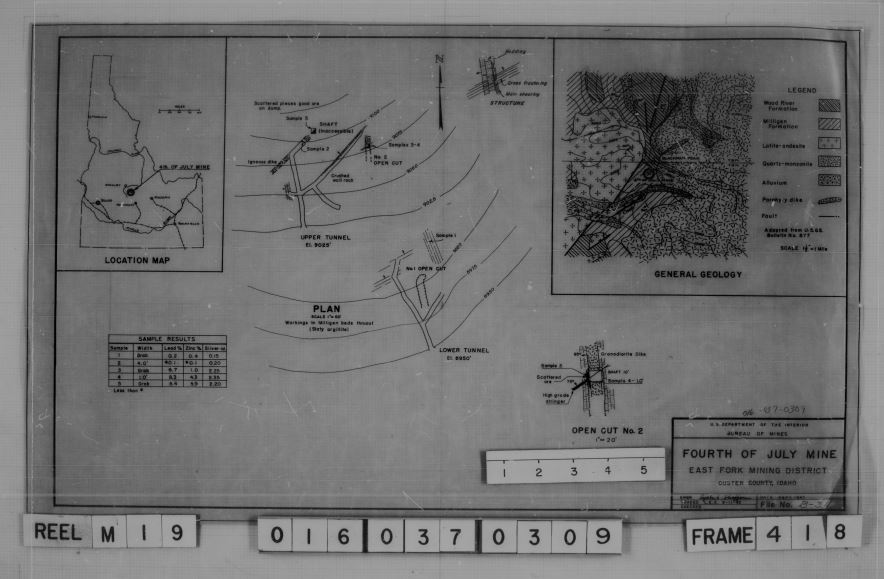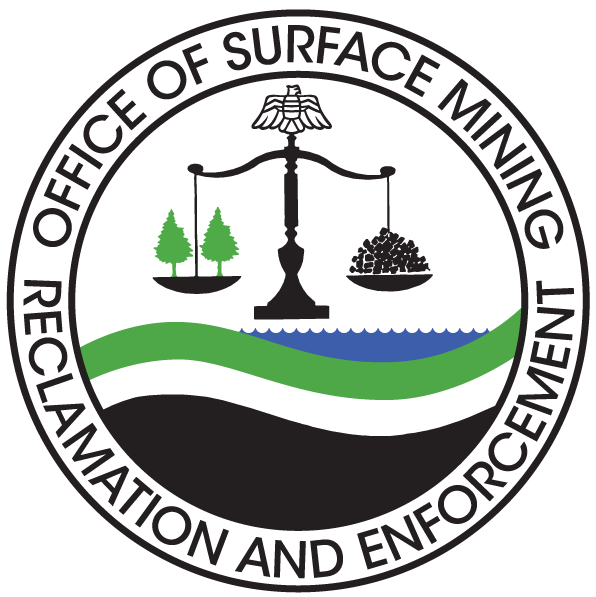National Mine Map Repository
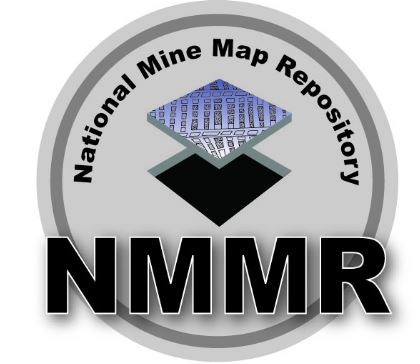
The National Mine Map Repository (NMMR) collects and maintains mine map information for the entire country. The NMMR acquires maps through public outreach with state and federal environmental agencies as well as mining companies, engineering and consulting firms, surveying companies, universities, and private citizens.
The facility stores over 246,000 mine records of closed and/or abandoned, surface, and underground mines throughout the United States. The repository contains mines from the 1790s to the present day. These maps are archived digitally and on microfilm (aperture cards). The database system allows visitors to search the database listing of mine maps available through the NMMR.
The National Mine Map Repository (NMMR), established by the Federal Coal Mine Health and Safety Act of 1969, is charged with maintaining an archive of all closed and abandoned mine maps from throughout the United States. Through its expert analysis of mine maps and related information, the NMMR assists both the private and public sectors in evaluation of related data for economic valuation, risk assessment, industrial and commercial development, highway construction, and the preservation of public health, safety, and welfare. The NMMR strives to increase public use and accessibility of its unique information by transforming its archive into digital geo-referenced media.
Mine maps within the Office of Surface Mining Reclamation and Enforcement (OSM) National Mine Map Repository (NMMR) are not guaranteed to be accurate, correct, or complete.
All maps in the NMMR have been donated to the OSMRE. The information contained therein cannot be verified and so cannot be guaranteed.
OSMRE’s inability to guarantee includes, but is not limited to, the following:
- The accuracy of the mine maps within the NMMR.
- The reliability of findings based upon data from the maps.
- The reliability of findings from digital mapping programs.
- The completeness of the maps, as they may not reflect prior or more recent mining.
- The accuracy of any geo-referenced mine maps found in the NMMR.
In 1969, an act of Congress established the need for a national mine map repository. The repository was to be funded and assigned to the Department of the Interior (DOI), Bureau of Mines (BOM) in 1970. A repository was set up at a BOM office in Pittsburgh, Pennsylvania that covered all states east of the Mississippi River with the exception of Louisiana and Minnesota. Those two states, together with most states west of the Mississippi River, were covered by a repository at the BOM Intermountain Field Operation Center in Denver, Colorado. Northwest states were covered by the BOM office in Spokane, WA.
In 1982, the responsibility for the repository and its staff was formally transferred to DOI's Office of Surface Mining Reclamation and Enforcement (OSM). Later, when BOM was dissolved in 1996, all of the maps from the BOM offices were consolidated into two separate OSMRE repositories, one each in the cities of Pittsburgh and Wilkes-Barre, Pennsylvania. The Wilkes-Barre Repository covered only the anthracite coal region of northeastern Pennsylvania. In 2011, the Wilkes-Barre Mine Map Repository closed. The entirety of the National Mine Map Repository's collection now resides in the Green Tree (Pittsburgh), PA office.
From the beginning, the mission of the repository has been to obtain authoritative maps on completed mining operations and preserve them for future generations, be they on microfilm or now digital. High priority is given to maps of mines in areas where the potential for adverse impact to the environment is most significant. The NMMR, in addition to being an archival entity concerned with the preservation of mine maps, is a storehouse of information on mines. The NMMR index system is a database of mining related information. It is a valuable resource for identifying mineral and energy reserves and for addressing mining related environmental issues. The information is made available to Federal and state geological surveys, state mining bureaus, mining companies, oil and gas companies, conservationists, research and planning organizations, water pollution boards, city and industrial planners, highway engineers, building contractors and real estate developers, and private citizens.
Today the NMMR is a modern high-tech facility with leading edge map scanning and archiving capability, and a state-of-the-art electronic map indexing system. The primary archive of over 400,000 .tiff images resides on over 30TB of storage space.
As maps are obtained at the repository, they are assigned a unique six-digit identification number (document number). Data sheets are prepared for each map giving all available information including: This information is added into the repository's database. The maps are then scanned into a digital format and stored on the repository's various mass storage arrays. The digital files are converted to microfilm for permanent storage in our archive.
The NMMR acquires maps through a vigorous outreach program directed at the public and state and federal environmental agencies.
Other sources include:
- Mining companies
- Engineering and consulting firms
- Surveying companies
- Universities
- Private citizens
We are always looking for donations of mine maps to add to our microfilm/digital collection. When maps are received from a donor they are scanned and converted to microfilm, and placed in the archive. The maps, along with a scanned images are returned to the donor. If you have mine maps that you would like to donate, please contact the NMMR.
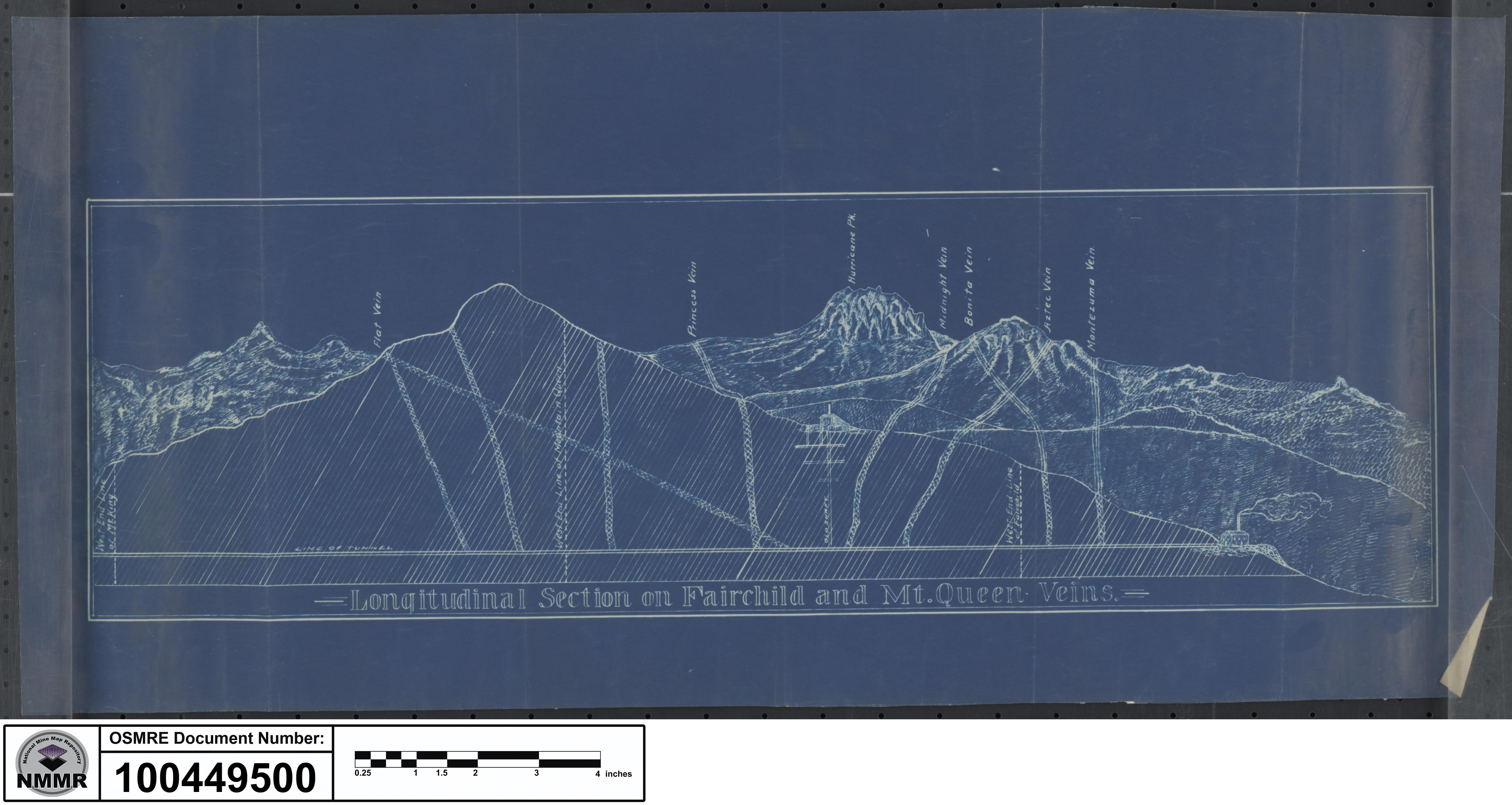
Blueprint cross-section. Document number 1004495.
The NMMR provides services ranging from retrieving mine related data for economic analysis to determining the potential risk associated with underground mining. We are not permitted to assess. The data from the archives aids the public & private sectors to do such things, but we do not. We will explain a map to novices (students, homeowners) including whether or not the area has been undermined. We determine which maps are suitable to be archived within the Repository - assessing the content & physical condition of the maps. We ascertain data from the map & enter it into a searchable database.
.jpg)
The oldest mine map within NMMR's archive is the Old Mine map from 1792.
We are currently moving towards an accessible, spatial database by digitizing & geo-referencing the nearly quarter-million digital images in the archive. As of 2/25/14, about 13% of the archive has been geo-referenced. Through analysis of mine maps and related information, the repository assists private and public sectors in industrial and commercial development, highway construction, and the preservation of public health, safety, and welfare. In addition, we collect, reproduce, and maintain a national inventory of mine maps and supporting documentation for private and public interests.
The NMMR contains digital and microfilm maps of surface and underground coal, metal and non-metal mines throughout the United States. Some of the information that can be found in the repository includes:
- Mine and company names.
- Underground mine plans including mains, rooms, and pillars.
- Closure maps.
- Adjacent mines.
- Man-ways, shafts, mine surface openings, barrier pillars and ventilation facilities.
- Geological information including bed name, bed thickness, depth, drill-hole data, cross-sections, elevation contours, structures, and outcrops.
- Geographical data including abandoned railroad lines and stations, coal towns, surface facilities, roads, ponds, streams, and property survey points.
- Districts, townships, sections, ranges, counties and municipalities, latitudes and longitudes, elevation bench marks, and surface elevations gas, oil wells and drill-hole locations.
The NMMR offers scanned map images (ranging from 200 dpi to 400 dpi) on CDs/ DVDs or as paper prints. Newly donated mine maps will be scanned in color. Microfilm mine maps are available for viewing by appointment.
The following is an example of some of our clients and the types of requests we receive: Maps are available for viewing by appointment only.
- Private Citizens/Homeowners: Inquire about past mining activity underlying their residence/community to access potential property hazard information related to past coal mining. They may also request information pertaining to mine subsidence insurance. There is no charge to private citizens and homeowners for the services of the NMMR.
- Consultants: Identify specific project areas and request information on various mine seams, mine depth, extent of mine, closure dates, detailed maps of mine workings, and mine operators to use as a basic source of geological and engineering data.
- Government Agencies: Request for information on subsidence, acid mine drainage, highway and bridge construction, mine maps for public display at municipal buildings and maps for local town meetings, mine fires and mine rescue operations. The information may also be requested to conduct health and safety activities, such as mine rescue operations or to correct adverse environmental impacts resulting from landslides, subsidence, mine fires, etc. There is no charge to government agencies for the services of the NMMR.
- Developers & Contractors: Request mine maps to determine extent of mine workings and mine depth for pre-construction. They require information on coverage over mines to determine a need for support structures or to assist in making decisions relative to land use, foundation design, etc.
- Architects: Utilize mine map information in their design of structures. The information is necessary for decisions on the types of foundations and weight displacements.
- Realtors: Request information on abandoned mines within a given municipality. Their primary concern is to identify the distance of mines that underlie individual homes and whether information on mine subsidence insurance is necessary.
- Mining Companies: Utilize mine maps to prepare mine permit applications for new or existing mines. Consume considerable time researching map files and request mine map copies for further evaluations.
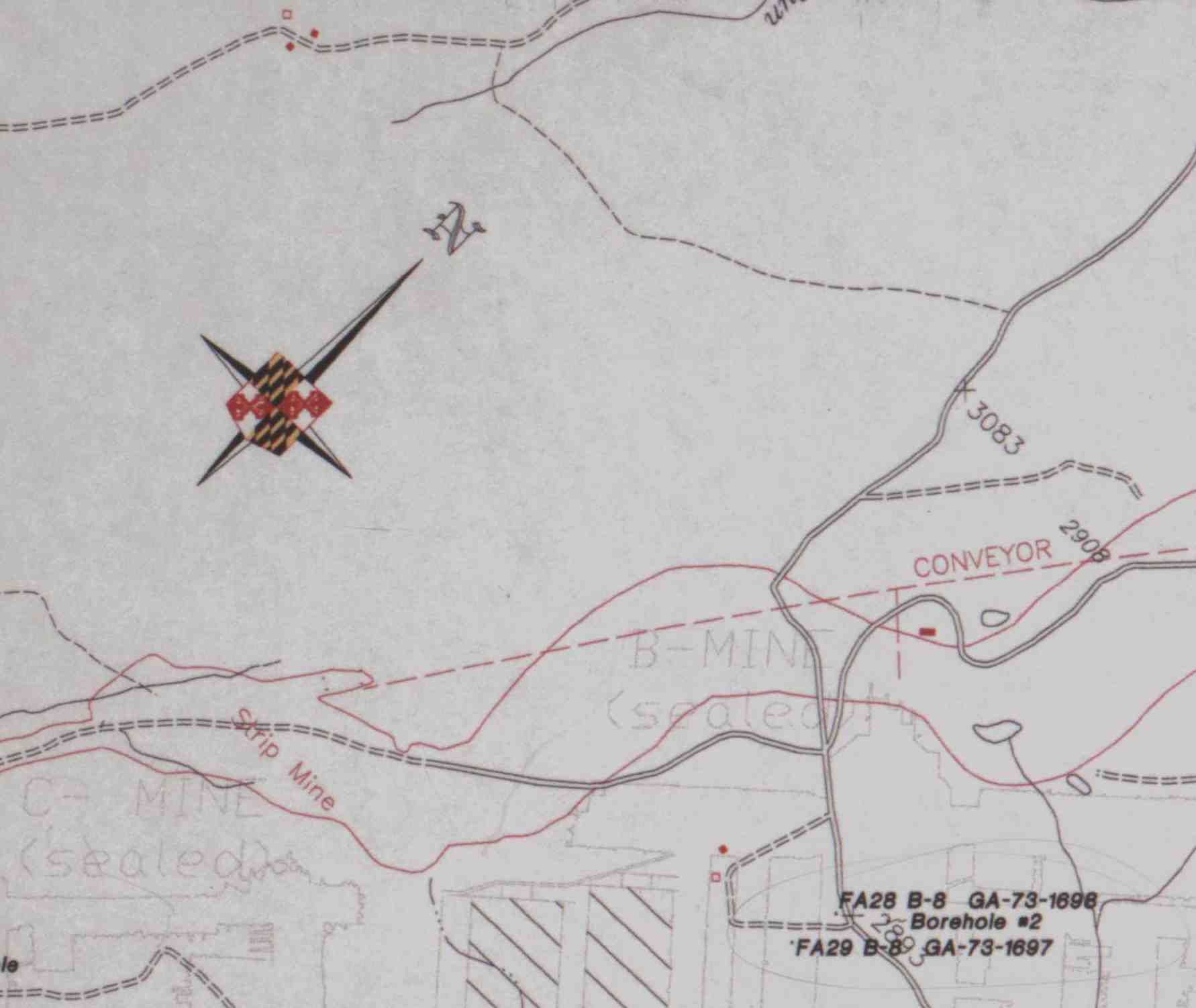
Close up of document number 390290.
The NMMR utilizes state of the art equipment to accomplish our mission of protecting and preserving mine maps for future generations.
Below are some of the equipment used within the repository:
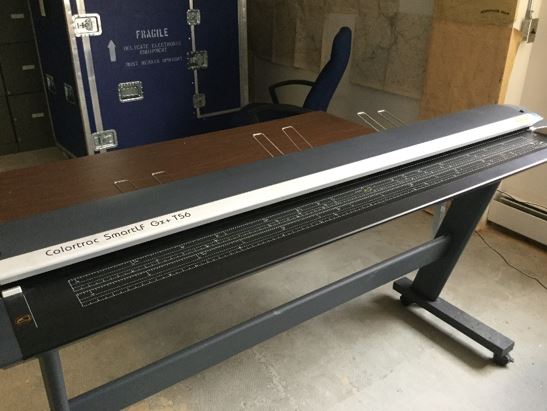
Colortrac GX+ T56 Roll Scanner
- Scans media up to .08" thick (aka Mr. Roboto)
- Fast! 1.5"/sec scan speed
- Up to 600 dpi, 48-bit color
- Unique instant-on, long-life bi-directional LED illumination system
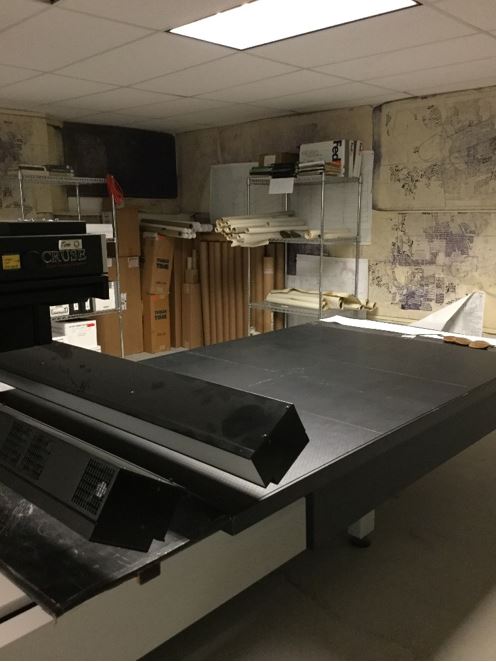
Cruse Table Scanners CS 285/1100 ST/FA
- 60 x 80" (aka Tom) and 60" x 100" (aka Lucille)
- Large-format fine art scanners
- Magnetic vacuum table
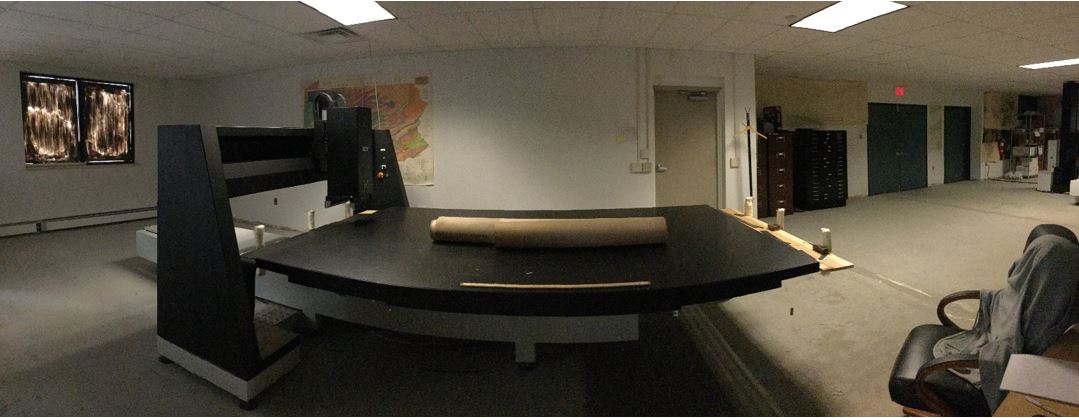 CS 360 ST-P Cruse Portal Scanner
CS 360 ST-P Cruse Portal Scanner
- 80" x 120" (aka Gustav)
- Scans at 600 dpi, 48-bit color (in strips)
- Strips stitched together and saved at 300 dpi
- Resulting images may be bigger than 6 GB
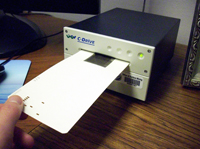
C-Series Wicks & Wilson Aperture Card Scanners
- Scans film according to original reduction ratio
- Resulting resolution 100-400 dpi at full scale
- Black and white or 8-bit grayscale
Below is a listing of additional mine map repositories:
- Colorado Geological Survey
- Illinois Coal Mines Quadrangle Maps and Directories
- Indiana Geological Survey
- Kentucky Geological Survey
- Kentucky Mine Mapping Information System
- Pennsylvania Spatial Data Access (PASDA)
- USGS Geographic Names Information System (GNIS)
- USGS Historical Maps
- West Virginia Geological and Economic Survey (WVGES)
Mine maps within the Office of Surface Mining Reclamation and Enforcement (OSMRE) National Mine Map Repository (NMMR) are not guaranteed to be accurate, correct, or complete.
All maps in the NMMR have been donated to the OSMRE. The information contained therein cannot be verified and so cannot be guaranteed.
OSMRE’s inability to guarantee includes, but is not limited to, the following:
- The accuracy of the mine maps within the NMMR.
- The reliability of findings based upon data from the maps.
- The reliability of findings from digital mapping programs.
- The completeness of the maps, as they may not reflect prior or more recent mining.
- The accuracy of any georeferenced mine maps found in the NMMR.
The NMMR Explained
For More Information Contact the Mine Map Team
Email: [email protected]
Phone: (412) 937-2833
